Media | Articles
According to You: The Best Starter Classics
Living in most car-centric parts of North America almost guarantees you an ample supply of vehicles for sale, and sometimes those vehicles can be considered classics. Many can be considered a “starter” classic for a budding enthusiast, but my suggested choice didn’t resonate with anyone. Perhaps there are too many cheap Ford Explorers where I live, and not enough vintage trucks/classic cars for the same prices.
But validation from others is not why the According To You series exists. Instead I choose to get the ball rolling, and let the Hagerty Community take it from there. And it clearly was a success, with great suggestions for starter classic vehicles from a variety of backgrounds. So let’s see how you answered the question.
First-Generation Mustang

@gerry: I think the 1st gen Mustang are a great place to start. There are plenty of units available, you can get a car from with a tree growing through the hood to a fully restored example, and everything in between for whatever your ability may be. Every part is readily available, there’s no searching for obscure parts.
@Mustang Kenny: I agree. They made so many that are still out there and many places make parts. And unlike newer cars that go down in value, classic cars go up in value so you get to enjoy your investment hands on.
@hyperv6: First gen Mustangs have been way under priced for years unless it was a Shleby.
Marketplace
Buy and sell classics with confidence
@RichyRich: First gen Mustang…
BMW 2002
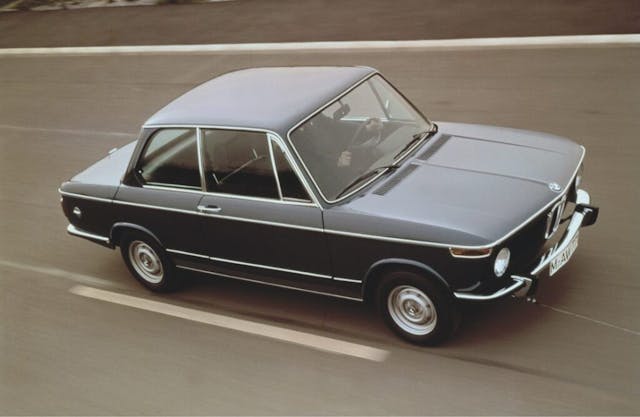
@David: For the first time owner of a classic, I would recommend cars that sold well when new, so there are plenty of examples from which to choose, so you’re not forced into picking something beyond your skills. This also leads to cars that with well-supported parts networks and active owner groups in virtually every part of the country. Mustangs, Camaros, Chevelles, Volkswagens and any number of pickups from Chevy and Ford. Did I follow my own advice?
No. I chose a BMW 2002, which is isn’t a BAD choice, but not the best choice.
@Ken: BMW 2002 is a great choice, IMO. Parts are still readily available and its easy to work on. It has the classic look, and it was my first classic as well.
@Stu: Those are great cars. Plenty of them are in Southern California.
Any(?) Truck With A Good Frame
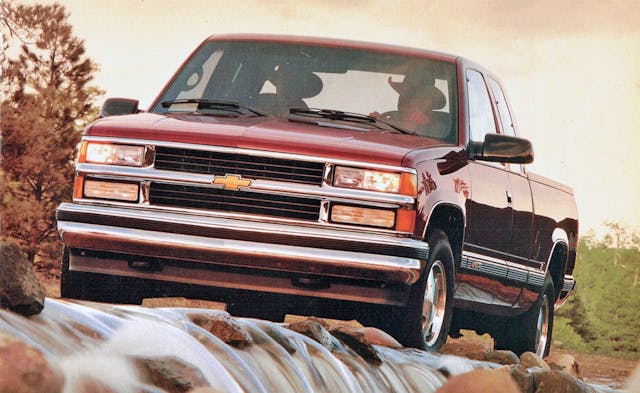
@hyperv6: The one to do is a truck. Ford or more so a Chevy. if you have a good frame you can buy about any needed part to restore one. The engines were made in the millions per year not in total. The best part is a well restored truck can bring a good profit as they are selling well once restored.
Most Camaro, Mustangs and Chevelles are priced out of reach anymore. Rusted shells can go for $10K. Find a basic truck on a farm and restore it, the 1960-1970’s examples are prime right now for restoration parts. The profit made on this can be applied to a better car at the next level.
@snailish: Truck is the entry-level answer all day long. Where I live the 60s trucks (especially GM) are now really pricey and the 70s are starting to catch up. If you can snag a good one at a decent price do it. Hagerty likes the term Radwood for anything 90s, and this is the sweet spot of hobby entry point.
While you still will see the odd GMT400 truck being used as a beater work truck they are declining fast. Prices on pristine ones in sought after specs (454 SS, shortbox 4×4, etc.) are rising but generally not yet out of reach. 90s trucks are a nice blend of modern/archaic. They made millions of them and they are hitting the bottom of depreciation curve. Modern mechanics have worked on them (unless it’s a really new mechanic at a dealership I suppose). They aren’t giant bloated things, yet they exceed most users truck needs for 99% of the things you want to do (if you need a heavy-duty towing rig –buy a 3500).
@Glenn: Any GM truck from 1973-87 (Square Body) or the C/K series from ’88-97. Easy to work on, and parts availability both new and used, is great. I did a mild refresh on a ’92 long bed a few years ago and was amazed at how easy it was to work on.
C5 Corvette
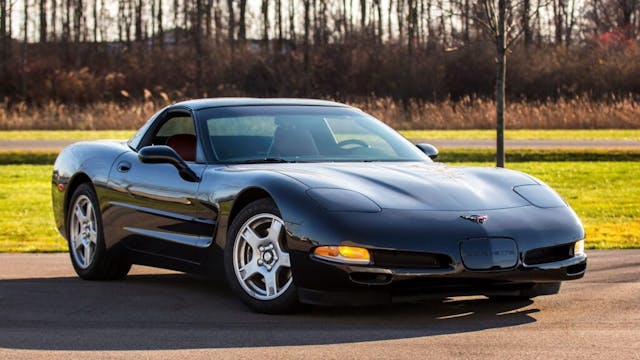
@MeJ: I’ll vote a C5 Corvette. They are reasonably affordable, easy to maintain, mod, and enjoy. I believe these actually will be considered “classic” one day.
@hyperv6: As a owner of a C5 I will agree. They are the performance bargain right now. as a low mile car can still be had cheap. You may never get split window Corvette money for a C5 since there are so many, but if in good condition they will maintain and grow some value as time goes on.
BMW 3 Series
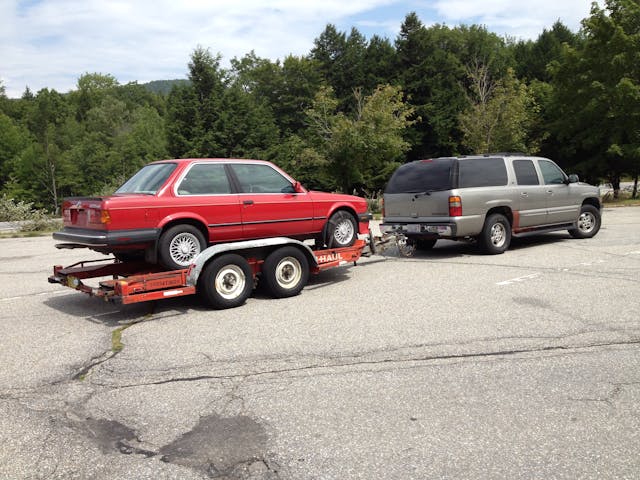
@TG: 3 Series Beemer. You can get them at throw-away car prices, and there are plenty of parts for them. Not the easiest things to work on, but most starter collectors aren’t going to get into serious engine work anyway.
MGB
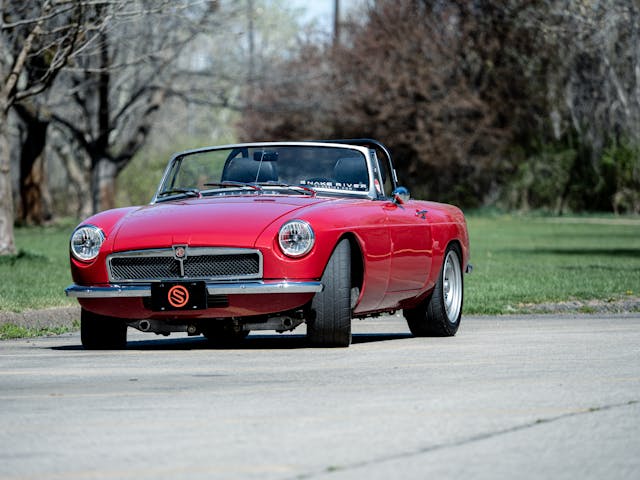
@MGWrench: I think it depends on the purpose of your starter classic. If you want to start a collection, but you’re not interested in maintaining it, then buy the best example you can afford of the car that excites you the most and enjoy.
If you want to learn how to restore and maintain a classic car, then I would recommend an MGB or MGB-GT. They are simple cars that are still affordable and with care can be reliable drivers, but the rules that must be adhered to are: 1. Make sure you keep oil in the carburetor dampers, and 2. Most carburetor problems are actually ignition, so install an electronic points replacement.
C4 Corvette
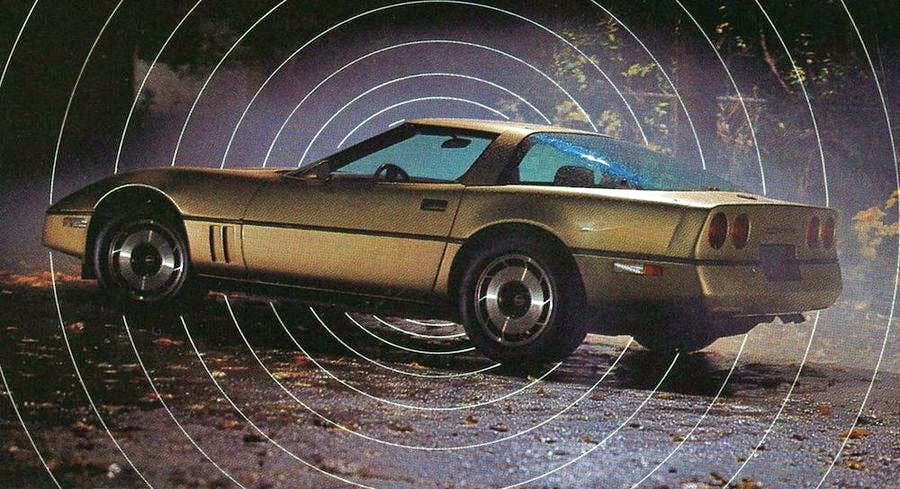
@Vehicle Nanny: If performance is your desire, I recommend a C4 Corvette (1986 or newer). The digital dash is not the nightmare some might think. Even 20 years ago I was able to fix mine for about $50 (and this was before YouTube!).
Tri-Five Chevy
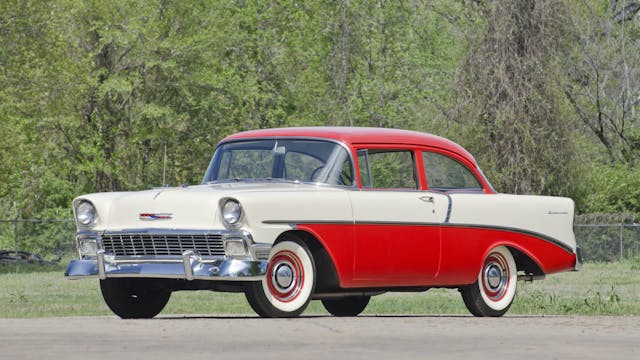
@Bob: I would tell them to start with a Tri-Five Chevrolet, 2 door. All parts are available, so find one that has the least amount of rust (they all have some rust) do not worry about the drivetrain. Do all your own work, the internet is full of advice, IMO.
Volvo 122

@JH: Volvo 122 series hands down! I am thinking of youth, or young adults, and a good starter classic that is durable, financially accessible, easy to work on, enough manufactured to have a good parts supply but still rare enough to seem unique, and a safe and fun car to drive! The Volvo 122 can be restored, modified to rally specifications, or built as a daily driver.
When built to rally specifications, the Volvo cars were a worthy match for many of the other cars of their era. The Volvo 122 is far easier to work on with better parts availability and less expensive to acquire and maintain than many of the vehicles mentioned earlier.
Supercharged GM W-body

@Dave: If you can find one, get a 1997 to 02 Buick Regal GS. It’s a supercharged, 240 HP sleeper with the bulletproof 3.8 V6. I did a quick search and found one in pristine condition, 64k miles, asking price $6,995.
@Sajeev Mehta: Fantastic choice! I’d add all of the Regal’s W-body supercharged brothers from Chevrolet and Pontiac, as they all have great performance with dirt cheap replacement parts.
Volvo 240

@Howard: Volvo 240, especially a later model. Not sexy or quick, but younger people appreciate the cool factor of the quirkiness.
Chevrolet Corvair
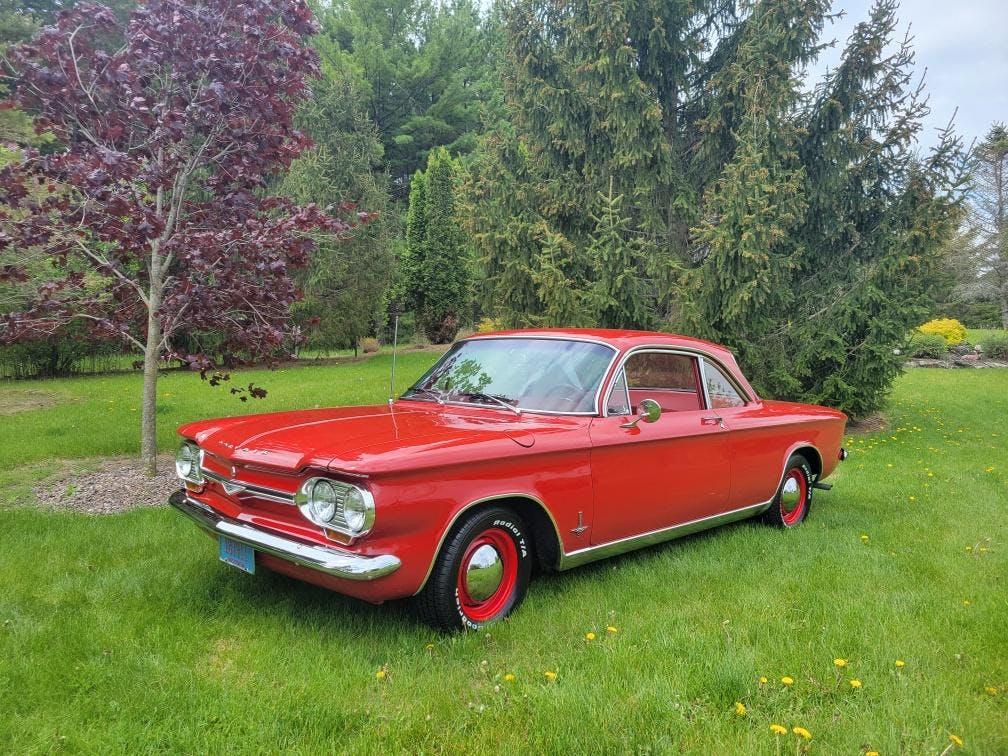
@Paul: If you want something a bit different look at a Corvair. They’re still relatively inexpensive to own and restore. There are Corvairs for every taste. There are cars of all kinds plus trucks if you like. They’re still competitive in vintage racing as well as great cruisers. Parts are fairly easy to source and they’re not too complicated for a beginner. There are tons of info about them as well.
Mercedes-Benz 280 SL
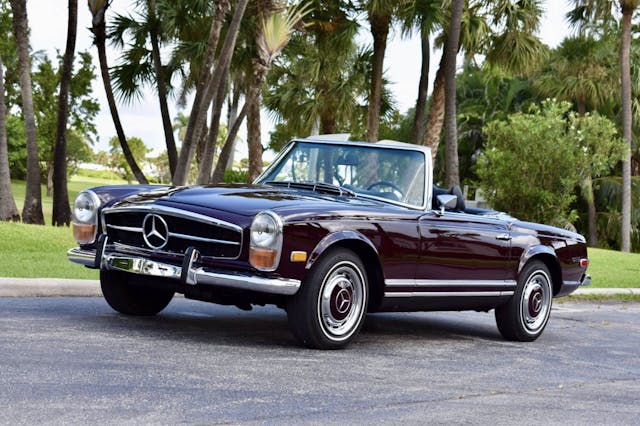
@Ramsey: Mercedes-Benz 280SL! Reliable, respected, readily available support, and almost always the same value when you’re selling as when you’re buying!
Ford Model A
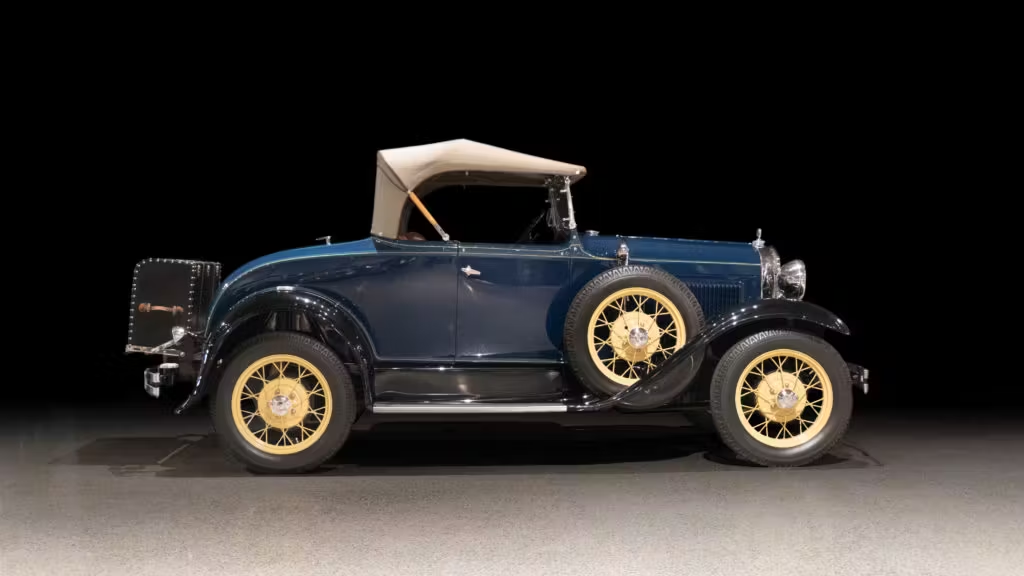
@Jim: I will take a slightly different tack with this question. First, the key words here are “first” and “classic.” In that context, I suggest a first classic should be something designed for the person who is actually entering our world but has little to no experience with either cars or mechanical work in general.
My suggestion is then a bit off the wall: I recommend a Model A Ford, for the following reasons. They are plentiful; Henry literally made millions and a satisfying number are still out there. They are dirt simple. Model As are a wonderful basis for a person to really learn the fundamentals of how cars work. A copy of Martin Stockel’s book on automotive fundamentals and repair (first or second edition is recommended) is an excellent basic handbook for the newbie. A Model A specific book will be invaluable as well. The whole industry that we depend on for maintaining and restoring our classics today was founded on the maintenance, repair and restoration of Henry’s early cars. There is an enormous support for Model A parts and services. The cars themselves are not outrageously expensive, unlike more modern vehicles. Check out a current Hemmings listing for the Model A. Many are available from professionally restored trophy winners down to the bring a trailer category.
I suggest the new person look for a car that has been previously restored, several years ago, and preferably a home shop amateur job. These are amazingly cheap when compared against most other candidates. It will be something that can be repaired fairly easily, is not too expensive, and with simple tools can be repaired or rebuilt easily. By seeking out a previously home brewed restoration, the newbie will get something useful, will be inclined to use it around town and will usually be close to home if some “unscheduled” maintenance is needed. The qualities of simplicity found in the Model A will provide the new person everything needed to learn automotive fundamentals and enjoy a first classic without breaking the bank. Finally, when it is time to sell there will be a ready market for the history and entertainment the Model A represents.
@Septuagenarian Classic Enthusiast: Congratulations are in order, as this is the best answer to the question as stated in the title of the article. I agree completely. Well done Jim!
***
Check out the Hagerty Media homepage so you don’t miss a single story, or better yet, bookmark it. To get our best stories delivered right to your inbox, subscribe to our newsletters.
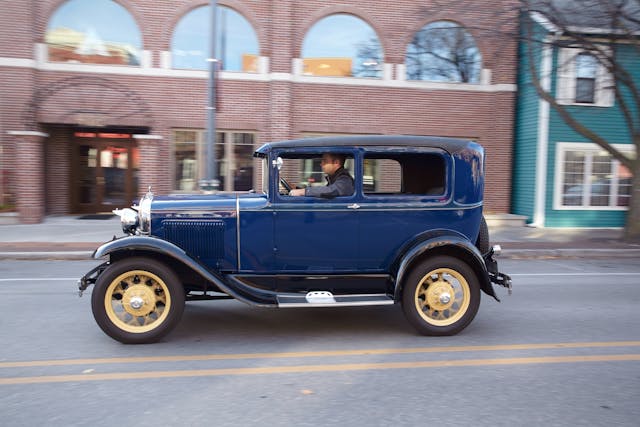

















I’ve been driving my starter car for fifty years now. Started out as a 68 Z28 and is now a Pro Street with Detroit Speed on the bottom and a LS3 in front. Mind you, it’s sat at times for years, but the itch never quit, restore, rebuild, modify….. and drive the wheels off of them. Enjoy
Starting off with the Mustang. My first thought, perfect, but possibly pricy. That got me thinking…really anything from the late 50’s up through the mid 70’s will have simple electrical, brake, fuel and cooling systems. Really everything is pretty simple for those years and can be made reliable. The insurance will also be affordable, taking into consideration that teenagers don’t qualify for Hagerty insurance. Anything too much older will be 6 volt based and they won’t be able to put in a modern sound system, without converting it to 12 volts. That could get expensive and involved. A Corvette would be awesome, but do you really want your teenager loose on the streets in one? Can they afford the insurance? Can you afford the risk? My first car, that wasn’t one of the family cars, was a 1967 Thunderbird four door. Miles of vacuum hoses to maintain, cutting off the ends when they would split. I rebuilt power window motors and the turn signal motor and relays. I even replaced the engine. I learned a lot from that one. Loved that car and still miss it today.
The NA and NB Miata should probably have been on the short list here. Both are remarkably simple and easy to service and repair. They are inexpensive to buy and parts are available and cheap. They are also high quality cars that offer dependability and an enjoyable driving experience.
The E30 3 series BMW is more complicated than the less expensive E21. The E30 is fairly mechanic friendly for the experienced person with a good size tool box. But you can spend a lot of money on BMW parts, which might be prohibitive to the new enthusiast. But otherwise, the BMW 320i is a perfect beginner car. I have worked on all of these.
Try reading what I said….
“Anyone young enough…”
Even if someone is 50 and looking to enter the hobby that means they started driving circa 1990. A tri-five Chevy is a world away from Corollas, Civics, GM J bodies, Ford Fox bodies, and Chrysler K cars common at that time.
From 1968 to 72, A Firebird is cheaper then a Camaro. A Cougar is cheaper then a Mustang. A Buick Skylark is cheaper then a Chevelle, likewise, cheaper then the Cutlass/442 or Lemans/GTO
A nice 65 to 70 Full Size Impala can be a “nice ride” and they are cheaper then the same years of muscle car intermediates.
Agree with the C5 Corvette, Volvo, Mustang, Tri-Five Chevys, 60s-90s Chevy and Ford trucks. Disagree with the Mercedes and Ford A or T or anything really pre-war. Learning how to be a mechanic is not the same as learning how to restore or keep a classic. A first classic should be something you can drive anytime, and see the efforts of restoration or modification as you go. To me, this list should include and 60s-80s VW, Jeep and Datsun models, as well as some Toyotas like the Celica and 80s BMWs like the 6 and 7 series. These are all fairly modern enough and were sold in quantities where they have a following today and parts are available. Give me a ’71 Datsun 510, a ’73 240z, a ’79 and ’85 Celica, a ’86 BMW 635csi, and any year VW squareback.
As a Corvair owner since 1970, I would advise that someone thinking of buying a Corvair as their first restoration find a nice one and pay the extra $$. While I find them easy to work on, keep in mind that they are quite different than ordinary cars, and care must be taken with drivetrain parts, especially the engine. I would also recommend finding a local Corvair club to join. Or join the national club, CORSA. They aren’t difficult, just different to work on. And buy a SHOP MANUAL!!